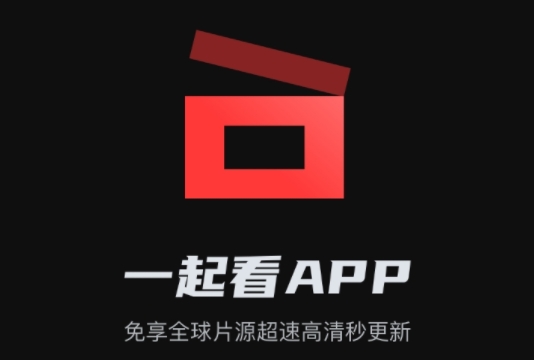最新下载
热门教程
- 1
- 2
- 3
- 4
- 5
- 6
- 7
- 8
- 9
- 10
vue结合axios实现restful风格四种请求方式
时间:2022-06-29 01:43:24 编辑:袖梨 来源:一聚教程网
本篇文章小编给大家分享一下vue结合axios实现restful风格四种请求方式,文章代码介绍的很详细,小编觉得挺不错的,现在分享给大家供大家参考,有需要的小伙伴们可以来看看。
Axios 是一个基于 promise 的 HTTP 库,可以用在浏览器和 node.js 中,基本请求有5种:
get:多用来获取数据
post:多用来新增数据
put:多用来修改数据(需要传递所有字段,相当于全部更新)
patch:多用来修改数据,是在put的基础上新增改进的,适用于局部更新,比如我只想修改用户名,只传用户名的字段就ok了,而不需要像put一样把所有字段传过去
delete:多用来删除数据
axios其实和原生ajax,jquery中的$ajax类似,都是用于请求数据的,不过axios是基于promise的,也是vue官方比较推荐的做法。
那么我们一起来看看具体在vue中的使用吧。
1、npm下载axios到vue项目中
这里解释一下为什么要下载qs,qs的作用是用来将请求参数序列化,比如对象转字符串,字符串转对象,不要小看它,会在后面有大用处的。
// npm下载axios到项目中 npm install axios --save // npm下载qs到项目中 npm install qs.js --save
2、main.js里引入
记住这边使用axios时定义的名字,我定义的是axios,所以后续请求我也必须使用axios,当然你可以定义其他的,htpp,$axios,哪怕是你的名字都没关系,注意规范。
// 引入axios import axios from 'axios' // 使用axios Vue.prototype.axios = axios; // 引入qs import qs from 'qs' // 使用qs Vue.prototype.qs = qs;
3、定义全局变量路径(不是必须的,但是推荐)
(1)、方法一
可在main.js里定义
// 右边就是你后端的每个请求地址公共的部分 // * : 地址是我瞎编的,涉及隐私,大家只要把每个请求地址一样的公共部分提出来即可 Vue.prototype.baseURL = "http://127.***0.0.1:9000/api";
(2)、方法二
在config中的dev.env和prod.env中配置,在main.js里使用那两个文件的变量即可
①dev.env:本地环境
'use strict'
const merge = require('webpack-merge')
const prodEnv = require('./prod.env')
module.exports = merge(prodEnv, {
NODE_ENV: '"development"',
// 这里是本地环境的请求地址(请忽略地址,明白原理即可)
API_ROOT: ' "http://local*hos**t:8080/web" '
})
②prod.env:上线环境
'use strict'
const merge = require('webpack-merge')
const prodEnv = require('./prod.env')
module.exports = merge(prodEnv, {
NODE_ENV: '"development"',
// 这里是本地环境的请求地址(请忽略地址,明白原理即可)
API_ROOT: ' "http://local*hos**t:8080/web" '
})
③main.js中使用此路径
Vue.prototype.baseURL = process.env.API_ROOT;
4、在具体需求的地方使用
举个例子:
当我在登录页面点击登录,然后需要请求后台数据判断登录是否能通验证,以此来判断是否能正常登录,请求方法我写在methods里了,通过vue的@click点击事件,当点击登录按钮发起请求,然后通过vue的v-model绑定用户名和密码文本框的值,用来获取用户输入的值以便获取发送参数
之前我定义的变量是axios,所以这边使用this.axios发起请求,post是请求方式,而我需要把用户名和密码以字符串的形式发送,所以需要qs序列化参数(qs不是必须的,具体根据你请求发送的参数和后端定义的参数格式匹配即可)
.then是请求成功后的回调函数,response包含着后端响应的数据,可以打印看看
.catch是请求失败后的捕获,用来校验错误
login() {
this.axios.post('http://*bt2.*x*yz:8083/login/checkAdmin', qs.stringify({
"username": this.userinfo.username,
"password": this.userinfo.password
}), {
headers: {
'Content-Type': 'application/x-www-form-urlencoded; charset=UTF-8'
}
})
.then((response) => {
console.log(response);
})
.catch((error) => {
console.log(error);
});
}
以上方法也可以这样写:
login() {
this.axios({
method:"post",
url:"http://*bt2.x*yz*:8083/login/checkAdmin",
data:qs.stringify({
"username": this.userinfo.username,
"password": this.userinfo.password
}),
headers: {
'Content-Type': 'application/x-www-form-urlencoded; charset=UTF-8'
}
})
.then((response) => {
console.log(response);
})
.catch((error) => {
console.log(error);
});
}
注 : get、delete请求的参数是params(特殊情况可以直接跟在地址后面),而post、put、patch的参数是data
下面我们看看四种具体的请求方式吧 (忽略地址,涉及隐私所以就输了假的地址):
这里的${this.baseURL}就是我们前面定义的全局路径,只要在后面跟上变化的地址即可
这里的headers和qs不是必须的,因为我们业务需要传递这些数据,所以我才写的,大家只是参考格式即可
这里给出每种请求的两种写法,不尽相同,所以具体的请求还得看业务需求
put请求用的比较多,patch我自己用的很少,但是原理都是一样的,这里就不多说了
使用箭头函数是为了不改变this指向,方便后期处理数据
(1)、get
this.axios({
method: "get",
url:`${this.baseURL}/GetAll`,
headers: {
Account: "Admin",
Password:"123456"
}
})
.then((response)=> {
console.log(response)
})
.catch((error)=> {
console.log(error);
});
this.axios.get('http://bt*2*.x*yz:8083/solr/adminQuery', {
params: {
"page": 1,
"rows": 5
}
})
.then((response)=> {
console.log(response)
})
.catch((error)=> {
console.log(error);
});
(2)、post
this.axios({
method:"post",
url:`${this.baseURL}/Create`,
headers: {
Account: "Admin",
Password:"123456"
},
data:qs.stringify({
Title: this.addTitle,
Host: this.addHost,
Port: this.addPort,
Account: this.addAccount,
Password: this.addPassword,
DbName: this.addDbName
})
})
.then( (response)=> {
console.log(response);
})
.catch(function (error) {
console.log(error);
});
login() {
this.axios.post('http://*bt2.*x*yz:8083/login/checkAdmin', qs.stringify({
"username": this.userinfo.username,
"password": this.userinfo.password
}), {
headers: {
'Content-Type': 'application/x-www-form-urlencoded; charset=UTF-8'
}
})
.then((response) => {
console.log(response);
})
.catch((error) => {
console.log(error);
});
}
(3)、put
像这个请求,我就在地址栏后面追加了一个参数,id,只要后端格式允许,也可以这样做
this.axios({
method:"put",
url:`${this.baseURL}/Update/`+(this.Data[index].id),
headers: {
Account: "Admin",
Password:"123456"
},
data:qs.stringify({
Title: inputs[0].value,
Host: inputs[1].value,
Port: inputs[2].value,
Account: inputs[3].value,
Password: inputs[4].value,
DbName: inputs[5].value
})
})
.then( (response)=> {
console.log(response);
})
.catch(function (error) {
console.log(error);
});
this.axios.put('http://bt2*.*x*yz:8083/Goods/update', {
"goodsId": goodsId,
"goodsName": goodsName,
"goodsPrice": goodsPrice,
"goodsNum": goodsNum,
"goodsKind": 1,
"goodsWeight": goodsWeight
})
.then((response)=> {
console.log(response)
})
.catch((error)=> {
console.log(error);
});
(4)、delete
this.axios({
method:"delete",
url:`${this.baseURL}/Delete/`+(this.Data[index].id),
headers: {
Account: "Admin",
Password:"123456"
}
})
.then((response)=> {
console.log(error);
})
.catch((error)=> {
console.log(error);
});
this.axios.delete('http://b*t2.xyz:**8083/Goods/delete?goodsId=' + this.ProductId)
.then((response)=> {
console.log(response)
})
.catch((error)=> {
console.log(error);
});
相关文章
- 逃离鸭科夫结局有几个 结局0和结局1达成条件一览 12-16
- 学信网官网登录入口-高等教育学历查询官方通道 12-16
- 失控进化预约入口官网 预约地址及预约奖励一览 12-16
- 网页版邮箱登录入口全攻略及实用技巧大全 12-16
- 学习通网页版访问线路升级-一键直达课程界面更快捷 12-16
- 光与影33号远征队持久强力符文:符文持久强力的作用及获取方式详解 12-16














